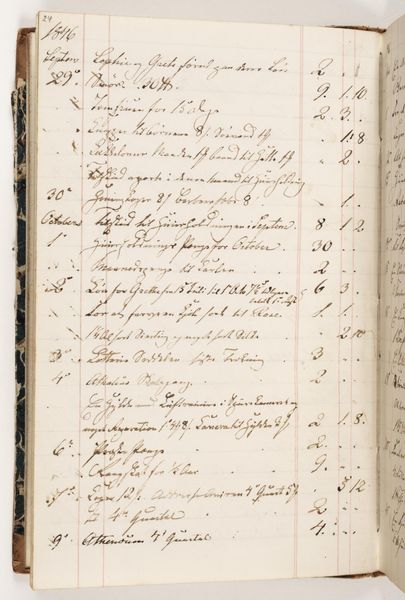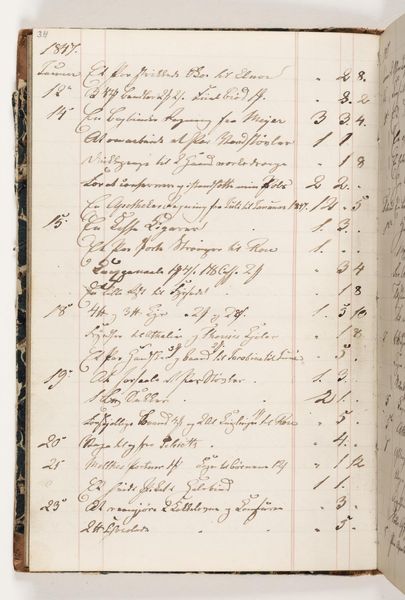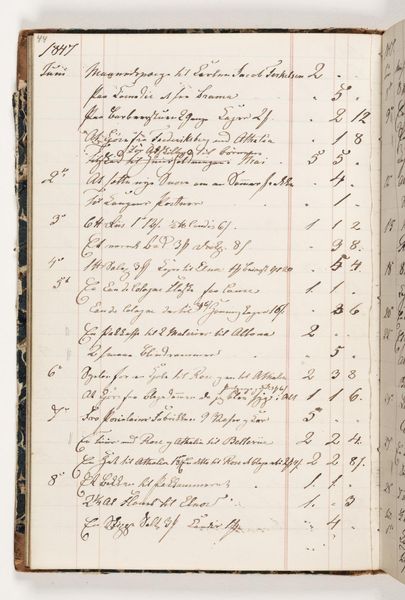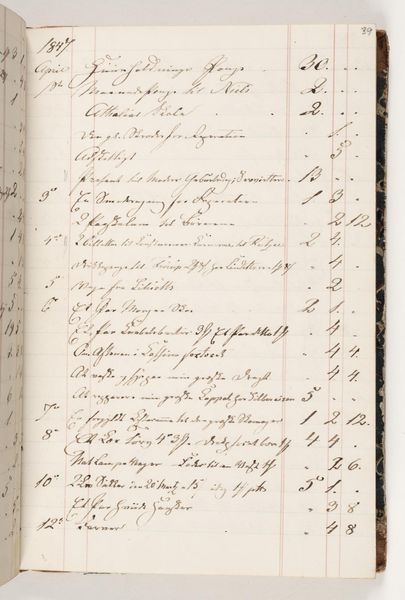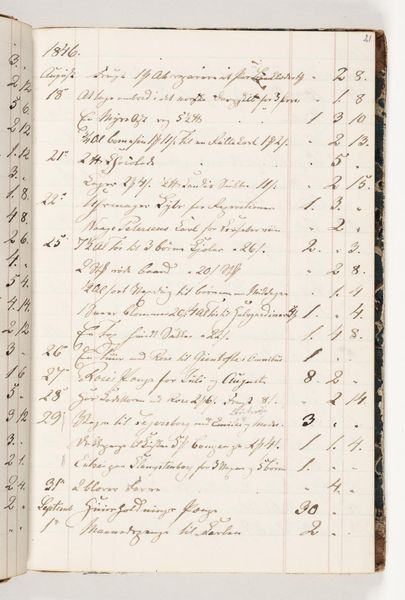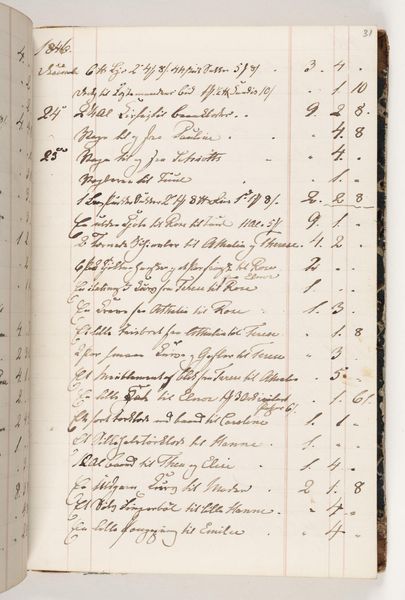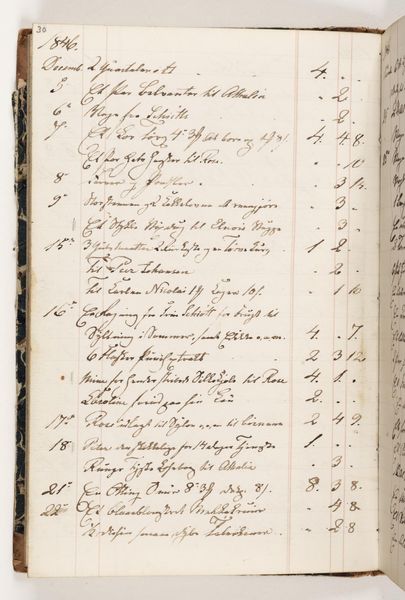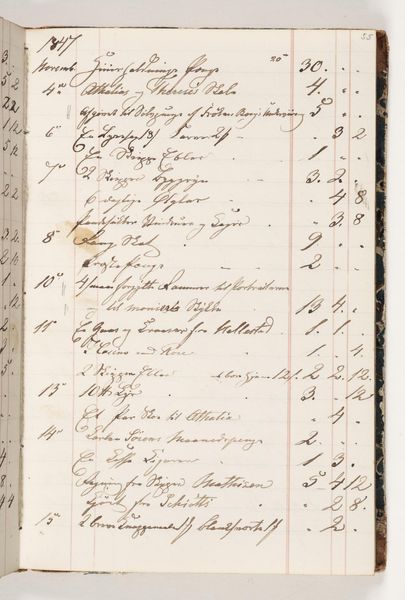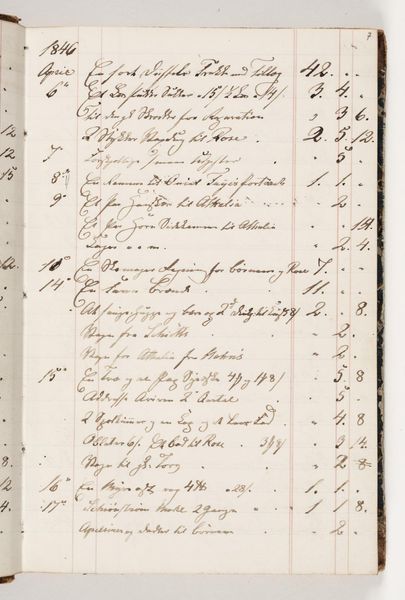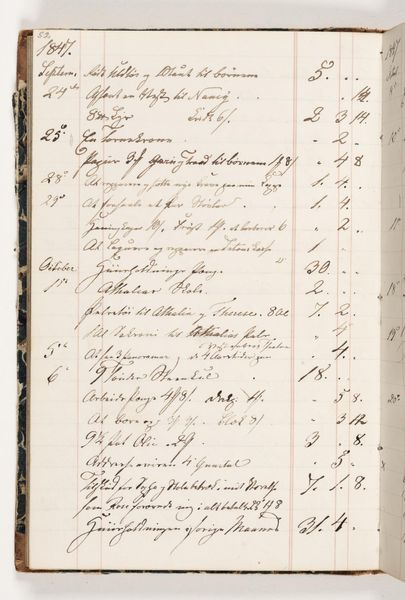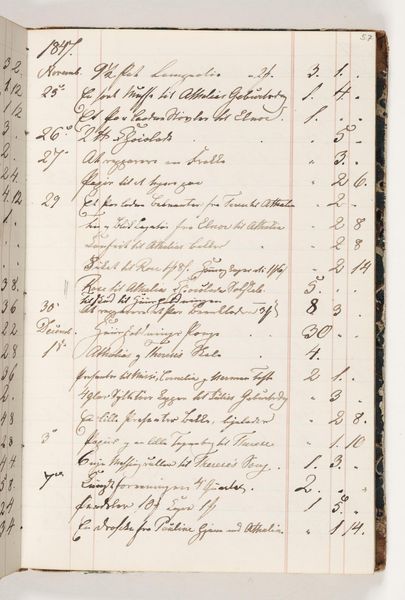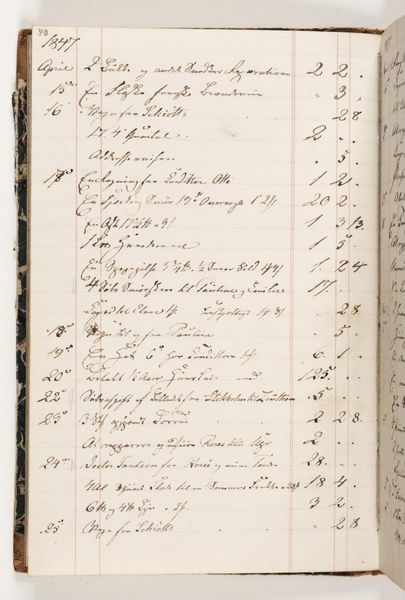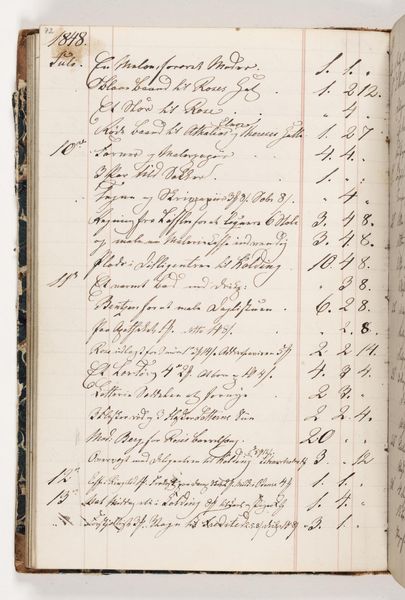
drawing, paper, ink, pencil, graphite, pen
#
drawing
#
paper
#
ink
#
pencil
#
graphite
#
pen
Dimensions: 200 mm (height) x 130 mm (width) (bladmaal)
Curator: This unassuming page, titled "Regnskab 1847," created in 1847 by Martinus Rørbye, primarily uses ink, pencil, and graphite on paper. It looks like a page out of an old account book. Editor: Exactly. It has a very aged, functional feel, and seems to be capturing everyday notes of some kind. What do you see in a seemingly ordinary document like this? Curator: Well, as a materialist, I see a fascinating glimpse into the everyday labor involved in 19th-century record-keeping. Consider the paper: its texture, its probable source, and the labour involved in its production. Look at the various inks and the precision required for handwriting, and the societal function that dictated this specific type of materiality. This isn't merely art; it’s evidence of how knowledge was constructed and maintained. How does this challenge the separation between art and mundane documents? Editor: It certainly reframes it. I usually consider art in a gallery setting, so looking at its purpose rather than just aesthetics shifts my perspective. Are you saying this document reveals how labour was seen in society at the time? Curator: Precisely! This "Regnskab" becomes more than just an account; it embodies the economic and social structure of its time, visible through its materials and production. It reveals that labor was probably undervalued, and record keeping likely performed without consideration to those whose finances were on display. Editor: So, by examining the materials, we understand a larger social picture that it reveals? Curator: Absolutely. Its value isn’t just aesthetic or historical, but material, and speaks to production processes and social hierarchies, challenging traditional notions of art. What did you find most insightful in this material analysis? Editor: It definitely changed how I will look at other artworks by considering how their materiality impacts their meanings. Thank you.
Comments
No comments
Be the first to comment and join the conversation on the ultimate creative platform.
